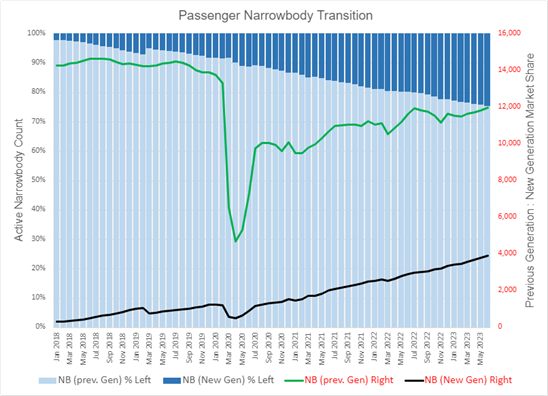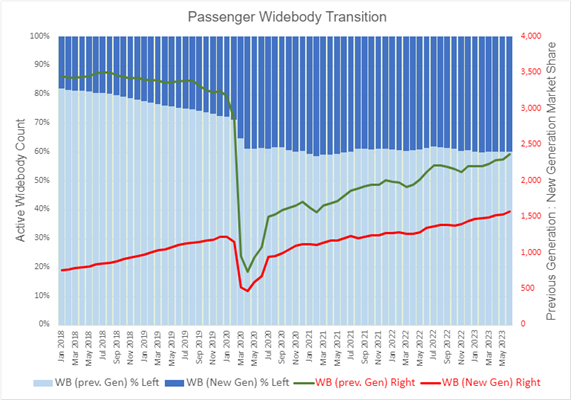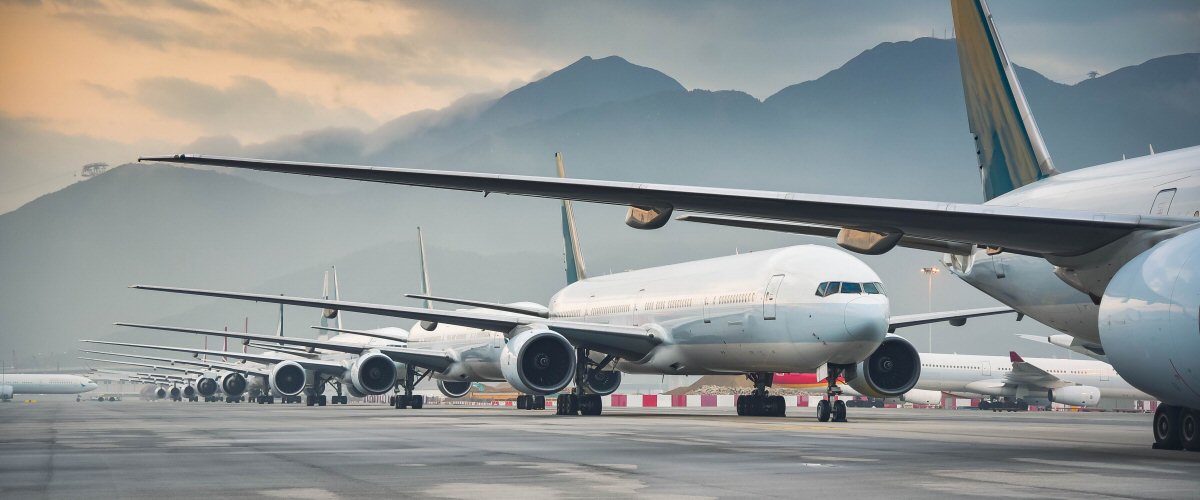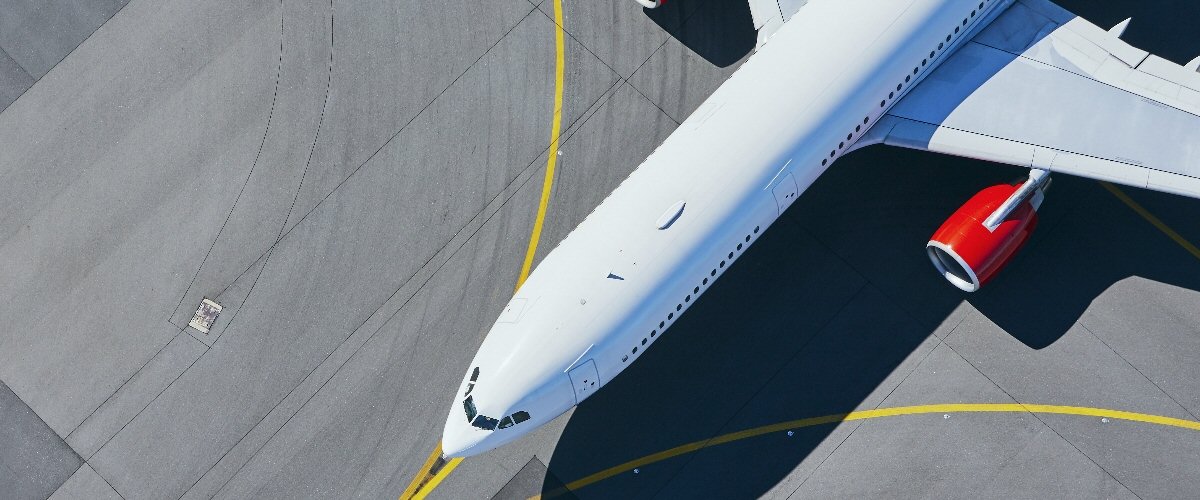This week, I’m going to loop back to the transition between new and previous generation aircraft that I covered about a year ago. Over that time, we’ve had record firm orders, a slow build-up of build rates across the board and a 21% increase in global capacity year-over-year for July, with APAC showing a ~ 50% increase! Despite that, it is remarkable to see that we are still way off from the balance tipping from old to new, as visualised in the two charts below. This certainly echoes Gus Kelly’s comments this week on the AerCap earnings call.
In the following charts, I present the monthly share evolution and specific active count split between previous and new generation aircraft for both passenger narrowbody and widebody fleets. For the narrowbody fleet, this means A220/A320neo/737MAX families versus the rest, and for the widebodies, 787/ A330neo/A350 families versus the rest. Both sectors have certainly encountered their fair share of problems, relating to tech groundings, engine issues, production halts, and a pandemic, yet the market share evolution trends are quite different between them.
For the narrowbody market, the share has grown 23% over the past 5.5 years to ~25% based purely on aircraft count. Despite many hiccups, the growth of narrowbody new technology has remained on a relatively ordered path. The effect of the MAX grounding is visible but has realistically only impacted the long-term position by ~7%, whilst the technology shift effect during Covid barely registers. However, it is also quite hard to visualise any rate hikes, as a 10% shift can get lost in the weeds. Despite signals from the OEMs, the shift continues to remain a slow transition and of relatively low impact against the size of the fleet. Entry into service technology issues continue to pose problems to maintain reliability and that will continue for quite some time given the size of the problem. At what point does the market reach a balance though? Taking rate hikes into consideration and the likelihood that ~1,000 previous technology narrowbodies will never return to passenger service, a 50:50 share isn’t likely to occur until we approach the end of the decade (Feb 2030 +/- 12 months based on several scenarios), and in keeping with the principle that the fleet doubles every 15 years.
That’s a very different situation to how the widebody market continues to shape up, whereby the re-fleet trend has essentially remained unchanged since April 2020.
The process started much earlier than for the narrowbodies with the arrival of the 787, and by late 2019 it looked like the 50:50 point would be reached by 2024. At the onset of Covid, there was a sudden shift towards new technology, purely due to the abrupt departure of four-engine aircraft and the disproportionate storage of older variants. Since then, a slow return to build and delivery rates, coupled with production issues with the 787 and their slow return to service, has meant that the balance has barely moved at all in three years. The response of newer technology has been so slow that whilst the size of the new narrowbody fleet has increased by >200% since early 2020, the widebody fleet has only grown by 28%. The higher cost of debt against the late recovery of the relatively young Asian widebody fleet is a battle that will certainly maintain demand for 777s and A330s for some time to come. In terms of what happens to the balance in the coming years, the rate of recovery for the newer types is certainly more visible as we are starting from close to zero. This may indicate that the balance may start to shift once again early next year, but it remains slow. Taking the rate recovery into consideration and the removal of at least 500 aircraft from the system, the bulk of the scenarios indicate that the balance will be achieved by the third quarter of 2029, only just ahead of the narrowbody sector. This indicates that the widebody fleet will only grow by two-thirds within the 15-year period. Of course, there are many things that can happen in six years, but the shift towards more economical, larger gauge/longer range narrowbodies impacting the traditional use of widebody aircraft is something that has been observed and is likely to continue up to a point. Naturally, airspace/airport constraints threaten that shift and remain a dynamic that cannot be ignored. I’m not suggesting any new designs, but further recovery of the A380s in storage and 777X orders will be expected.

Source: IBA Insight & Intelligence

Source: IBA Insight & Intelligence
With Lufthansa reporting yesterday, all three of the European flag carrier groups have now reported, and are all strongly in the black. Lufthansa Group and Air France-KLM’s Q2 operating margins of 11.5% and 9.4% respectively, both set records. IAG were the standout performer, however, with EUR1.3bn operating profit representing a 16.3% margin. They are now all in H1 profit at the net level.
The European results come amidst a great bulk of positive interim results. American Airlines completed the US legacy carrier set, with all three having Q2 EBIT margins over 10%. Southwest also announced record revenue, with an operating margin of 11.3%. In the same week, in Asia, ANA, Singapore Airlines and Japan Airlines also reported profitable quarters.
Therefore, IBA’s prediction that demand would continue to support high fares into late 2023 seems to be holding true. Nonetheless, there are differentiators between carriers. Notably, the ranking of the European flag carriers seems to have flipped, where it was only AF-KLM that had a (paper thin 0.3% margin) operating profit in H1 2022.
Airline restraint in upping capacity has enabled Air France-KLM to produce an abnormally high load factor for a mainline carrier (86.9%) in H1. This was higher than both IAG (84.1%) and Lufthansa (81.7%). However, that restraint also meant that their peers were able to up profitable capacity by much greater amounts. AF-KLM’s revenue increase of 12.5% is significant but is dwarfed by the 26.2% and 45.3% increases of Lufthansa and IAG respectively. These increases in revenue improve profitability by diminishing the proportion of fixed costs.
Another strength of IAG was that all of its airlines reported strong operating profits. Transavia only just broke even for AF-KLM, whilst Eurowings and Brussels Airlines are still unprofitable for Lufthansa. This questions the wisdom of Lufthansa acquiring ITA, which itself was such a long way from profitability.
A final differentiator worth mentioning between the airlines is fuel. IAG and AF-KLM experienced greater fuel costs per ASK in H1 2023 than in H1 2022, despite the volatile market last year. This will be due to locking in more expensive hedging at the time, to avoid deeper pain. Expensive hedging will still be affecting the bottom lines of airlines for a while. However, going into Q3, the strongest quarter in the extremely seasonal European market, the airlines may not have to worry yet.
A leading aircraft engine lessor who has been a provider of global aviation services for over 45 years, is exploring a new endeavour in the promising Power-to-Liquid (PtL) SAF (Sustainable Aviation Fuel) market. The company and its recently established subsidiary, Willis Sustainable Fuels, are advancing plans for a new SAF refinery in Teesside, UK, where PtL SAF will be produced from industrial waste CO2 and green hydrogen made from renewable energy. Feasibility studies were completed at the end of 2022, and the project is now in the engineering design phase. Willis will be the first aviation leasing company to develop a SAF project of this scale, which demonstrates the company’s optimism in the currently nascent technology. PtL (or synthetic kerosene) has significant potential for meaningful emissions reduction and strategic investments are already being implemented into green hydrogen and the renewable energy sector. Once synthetic kerosene becomes technologically mature, there will likely be great investment potential within this area of sustainable aviation, especially as it becomes wider knowledge that some types of SAF go hand in hand with environmental caveats. IBA suspects that Willis’ new venture will catalyse further innovation from a broader range of sustainability stakeholders in the industry.
Our weekly update looks at the key trends and market indicators using data and analytics provided by IBA Insight.

IBAのワンストップ航空インテリジェンスプラットフォームであるIBA Insightを紹介します。IBAの広範なフリート、価値、市場データと飛行データ、専門家の意見とを組み合わせ、投資、リスクプロファイリング、航空機ポートフォリオの監視に大きな自信と保証を提供します。

受賞歴のあるISTAT認定鑑定士の大規模なチームと 30年以上にわたる独自のデータを活用しているIBAは、価値評価市場のリーダーです。グローバルに活動し、航空機、エンジン、ヘリコプター、貨物機、航空貨物、発着枠、スペアなど、さまざまな資産の価値について、独立した公平な意見とアドバイスを提供しています。お客様の期待を超えるように常に努力しており、IBAの客観的な判断は、融資、資産の回収、商業開発、転売に必要な保証をサポートします。

IBAは、世界中の大手航空機・エンジンリース会社と協力しています。当社の業界知識の深さは、専門家としてのアドバイスにも反映されているので、投資サイクルを通じてお客様をサポートし、お客様の旅のあらゆる段階で自信を与えています。評価、フリートの選定、ポートフォリオ開発からリース終了時の引渡、転売まで、リース期間中のあらゆるリスク評価と資産管理活動において、お客様をサポートします。

航空投資は複雑な問題を抱えていることがあり、多額の金銭的な利害関係が絡んでいるため、運に任せることはできません。初めて投資をされる方でも、市場で実績のある方でも、IBAは資産クラスの複雑さを切り開き、投資機会をよりよく理解するためのお手伝いをいたします。お客様と協力し、ポートフォリオの開発、多様化をサポートし、戦略的なニーズを充足いたします。

IBAは30年以上にわたり、世界的な航空会社や地域の航空会社と協力して、評価やアドバイザリーサービス、航空データインテリジェンス、航空機やエンジンの引渡におけるサポートを提供してきました。世界中の様々な航空プロジェクトに協力して取り組み、クライアントのさらなるリソースの要件を満たし、必要な時にはいつでもどこでもプロジェクト管理のサポートを提供しています。

当社は、訴訟支援と紛争解決に臨機応変なアプローチをとり、クライアントの法的戦略に合わせた思慮深い解決策を見出しています。30年以上にわたる独自の航空データへのアクセス、戦略的M&Aへの定期的な関与、および航空機管理の専門知識により、当事者間の典型的な争点となっている分野に定期的にアクセスできます。IBAは、航空機の損傷や損失に対する保険関連の和解から、貸手と借手の間の紛争、多くの場合、引渡時の紛争に至るまで、様々な側面からクライアントを直接、または法務チームを通じて支援します。